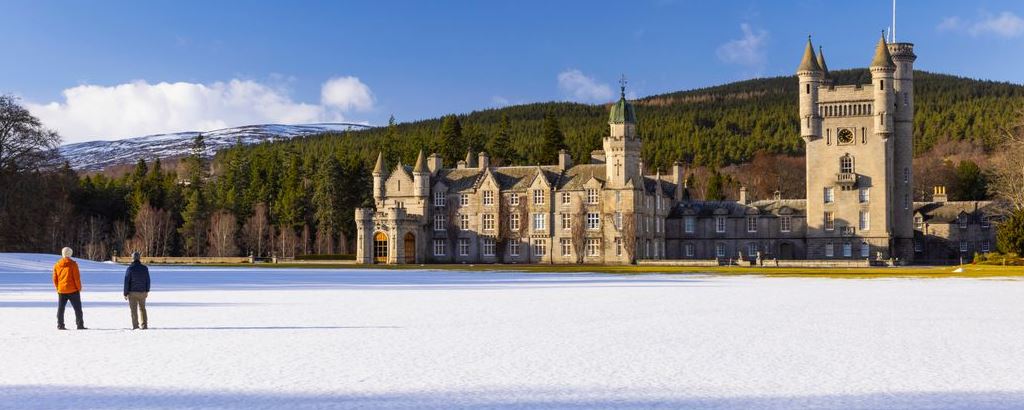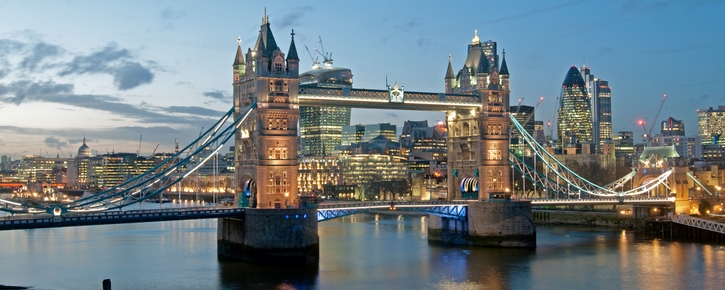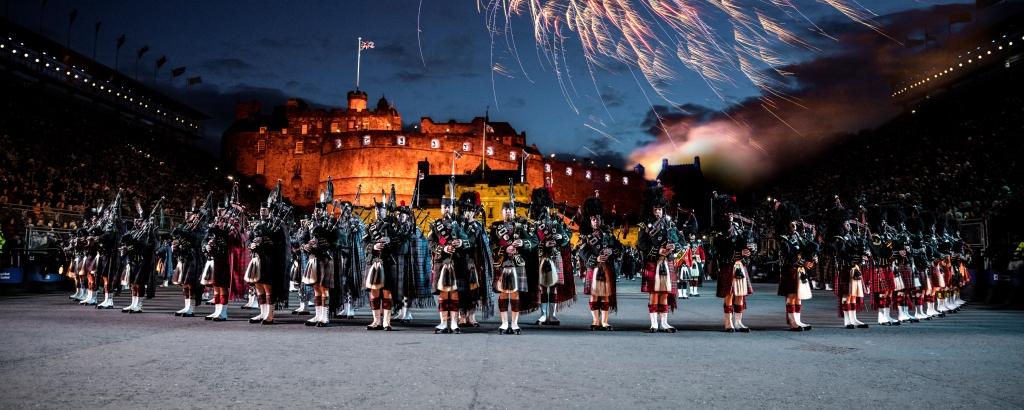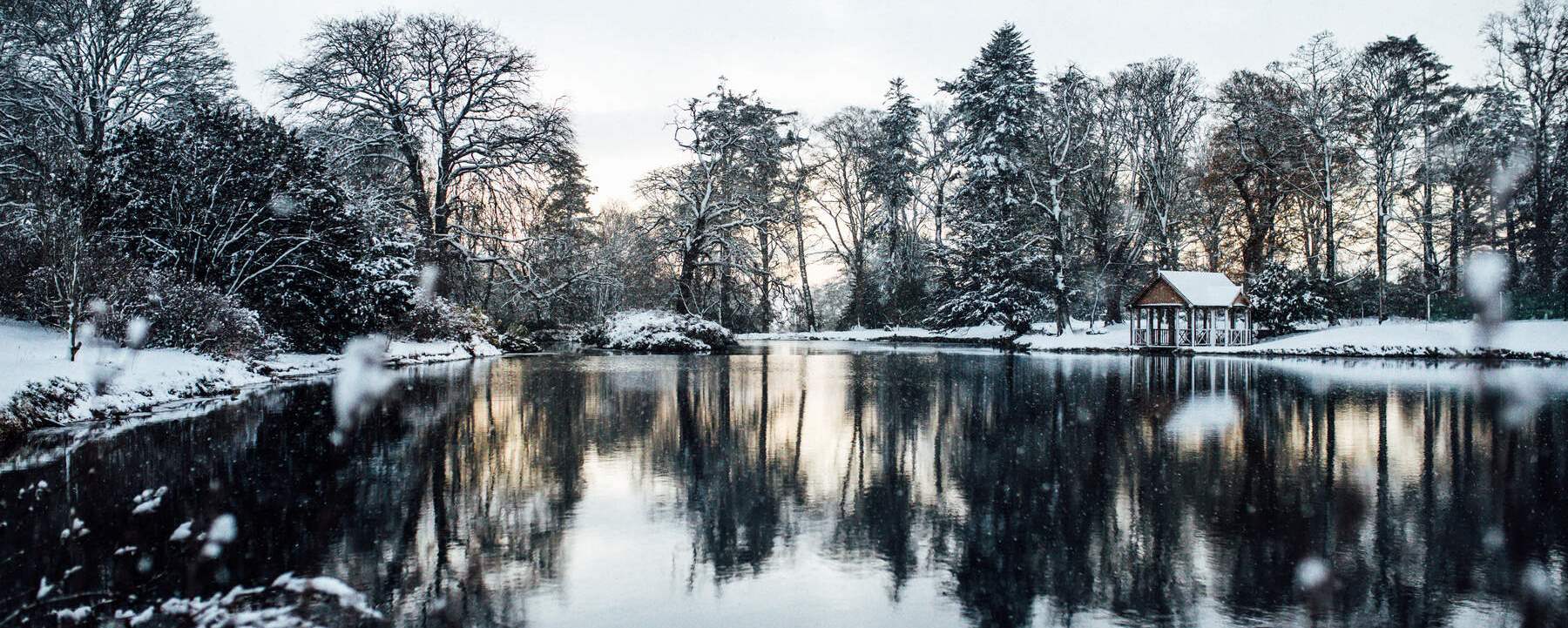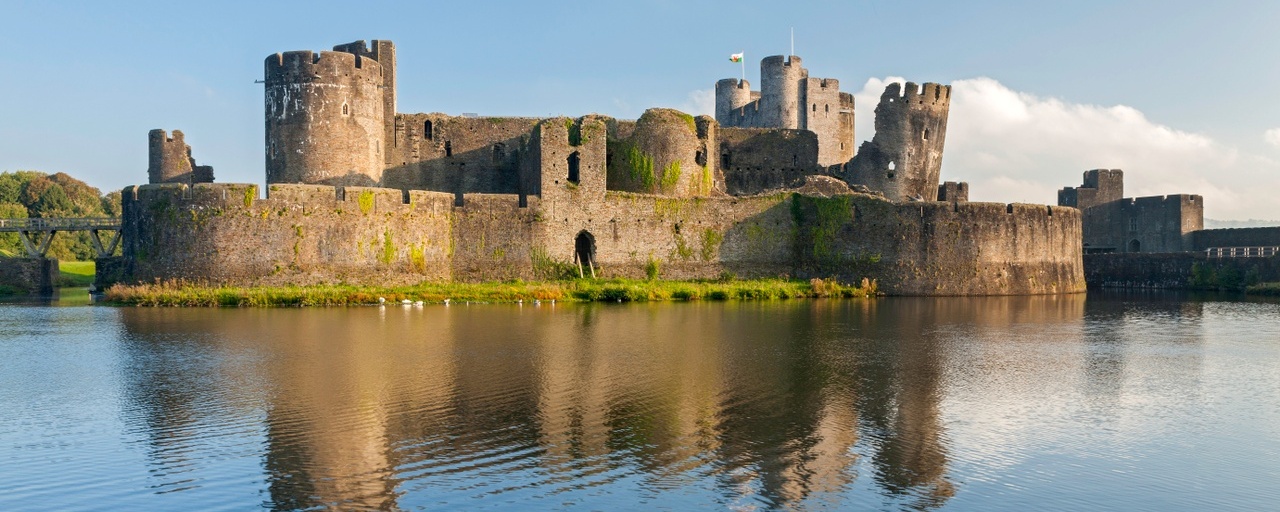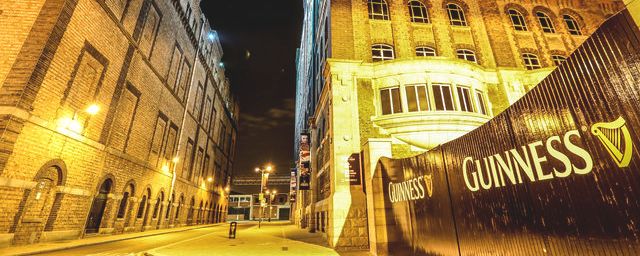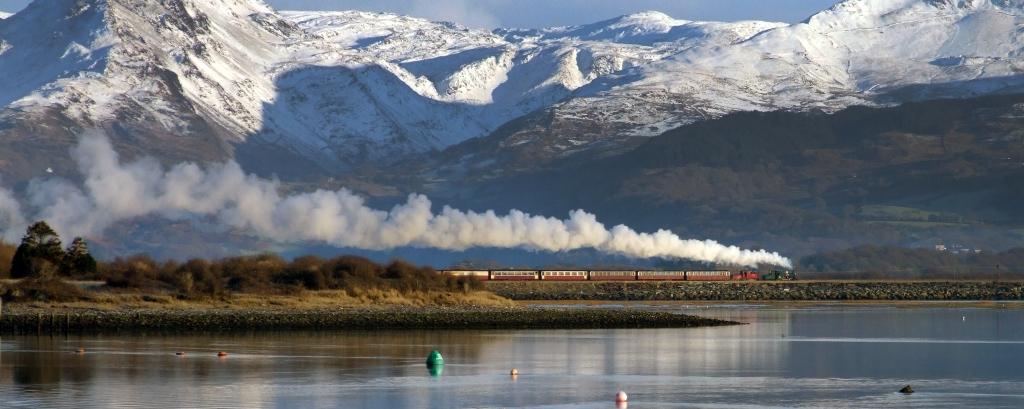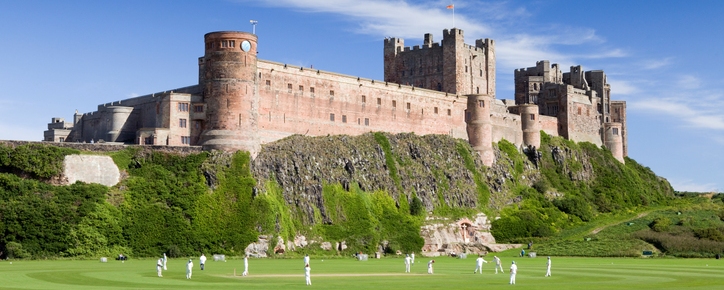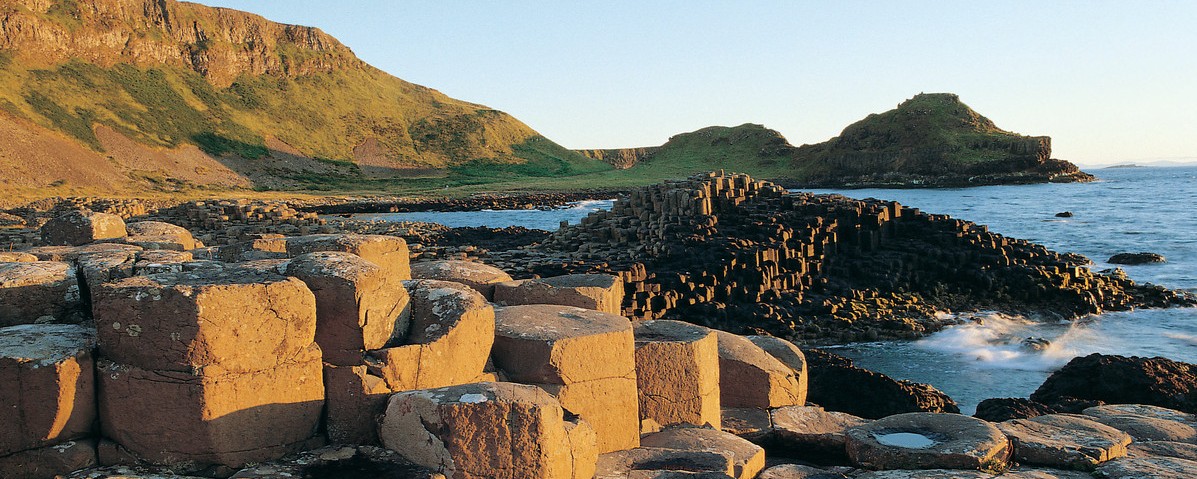Full steam ahead
On the 200th anniversary of the birth of commercial railways in the UK, Sarah Williams-Robbins explores our railway heritage.
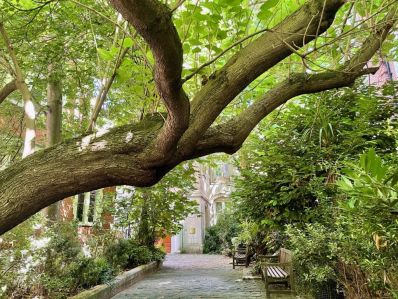 St Olave Jewry garden and hidden tower
St Olave Jewry garden and hidden tower
In a quiet lane in the City of London, a stone’s throw from the Bank of England, is an atmospheric walled garden, its entrance framed by an old, leaning, Indian bean tree. In the height of summer, when the tree’s lime-green leaves provide welcome shade, it would be easy to miss the Portland-stone tower behind it, hiding in plain sight.
The tower, now an office, is the work of the great 17th-century architect, Sir Christopher Wren. For it was once attached to a church, St Olave Jewry. But unlike many of its neighbouring places of worship, this church was not destroyed by enemy bombing in the Blitz. The death knell for St Olave came in the Victorian age, with the arrival of the railway.
Rail revolution
This year marks the 200th anniversary of the birth of commercial railway in the UK. On 27 September 1825, crowds cheered and waved off the inaugural train on the Stockton and Darlington Railway, the world’s first public railway to use steam locomotives. Thanks to Scottish engineer Robert Stephenson, this invention revolutionised travel. It also transformed the landscape and the fortunes of entire communities - not just in the UK, but around the world. The railway enabled people, ideas and goods to be transported in a manner unimaginable only a few years before.
The north of England was the first region to embrace this transport revolution. The south had some catching up to do.
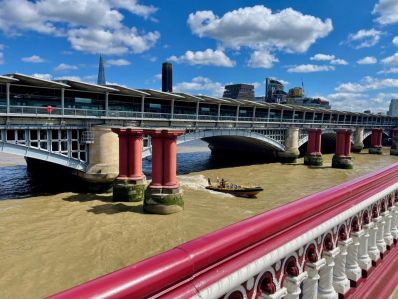 Blackfriars Railway Bridge red pillars
Blackfriars Railway Bridge red pillars
Frenzied enthusiasm
The development of new rail companies initially proved very profitable and gripped the stock market. But unlike our European neighbours, with their regulated, organised railway expansion under the authority of civic or national government, here in London, the development of the railways was haphazard and unregulated.
As Simon Jenkins explains in A Short History of London: “The railway’s intrusion into the geography of the metropolis was unplanned, uncontrolled and frenetic. Parliament…greeted railway capitalism with frenzied enthusiasm. So potent was the railway’s parliamentary lobby that Britain’s most sacred liberty, private property, was causally swept aside.”
London’s biographer, Charles Dickens, refers to the dramatic impact of the railway’s arrival in north London. In Dombey and Son (1846) he records: “Houses knocked down, streets broken through and stopped ... a chaos of carts lay topsy-turvy at the bottom of a steep, unnatural hill, there lay confused treasures of iron.”
Stations were built on the periphery of the capital, requiring passengers to disembark and continue their journey by other means. It would be a few more decades until the birth of the Underground, connecting these mainline stations from below. In fact, London’s Metropolitan line, running from Paddington to Farringdon, was the world’s first urban Underground railway, opening in 1863.
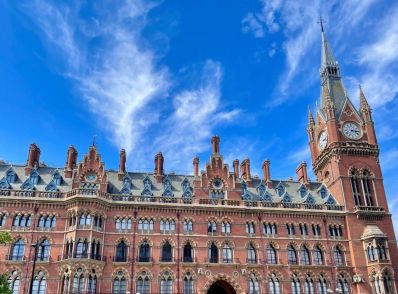 St Pancras / Midland Hotel exterior
St Pancras / Midland Hotel exterior
Ghosts and giants
In the City of London, the historic heart of the capital, there are still haunting reminders of our railway heritage. Back to the lonely tower of St Olave Jewry: the church was demolished in 1888, leaving the tower and garden. The parishioners, who would have been mainly lower-paid workers, had moved out of ‘the smoke’ to the newly-emerging suburbs, now easily reached by rail. These were the first commuters, a concept inconceivable to earlier generations. The City’s once bustling streets became empty after hours. Now only around 8,000 people live in the Square Mile.
If you take a (traffic-free) stroll along the Thames path, from London Bridge to Blackfriars, look out for the large, red columns protruding from the water like the disembodied legs of a giant. These are the remains of the first Blackfriars railway bridge, opened in 1864, by the London, Chatham and Dover Railway. The bridge remained in place until 1985 when it was removed as it was too weak to support modern trains. The old plinths were too large to remove.
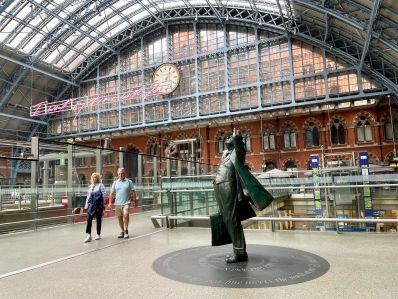 St Pancras John Betjeman statue
St Pancras John Betjeman statue
Cathedral of transport
In the late 1990s I worked near Kings Cross, then a run-down part of town. I’d pass the boarded up St Pancras Station and Grand Midland Hotel, in the hope of being able to visit in the future. And now we can! These architectural marvels are the work of Sir George Gilbert Scott, the most celebrated gothic architect of his day. Through the 1950s and 1960s, British Rail tried to close and demolish the station several times. Thankfully, Sir John Betjeman, a founding member of the Victorian Society, spearheaded a campaign to save the station and hotel. The campaign was successful in getting the buildings declared Grade 1 listed - just days before demolition was due to begin.
The cathedral-like station and adjoining hotel (now owned by the Marriott group) were lovingly restored in the early noughties. If you’re travelling by Eurostar, allow extra time for a visit to the champagne bar. You can raise a glass to Betjeman, whose statue stands proudly on the station’s upper concourse, reminding us of the importance of protecting our heritage for future generations. The British comedian, actor and current chair of the Victorian Society, Griff Rhys Jones, is currently battling with developers wishing to build an office block on top of Liverpool Street Station. The outcome remains uncertain.
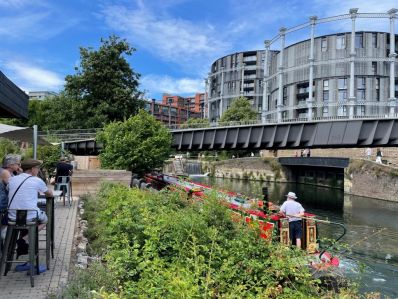 Canalside at Camley Street Natural Park
Canalside at Camley Street Natural Park
Urban oasis
St Pancras and King’s Cross are now destinations in their own right. Take a wander up to the renovated Coal Drops Yard and Granary Square, north of the stations. This former industrial landscape unites the railway hub with Regent’s Canal, along with quality shops and bars, outdoor entertainment and new housing. Beautiful planting on the raised walkway leads you across the canal to Camley Street Natural Park. Here you can stroll through nature, then watch butterflies and barges, while sipping a coffee at the canal-side cafe.
 Sarah Williams-Robbins is communications consultant, former charity director, and accredited City of London guide Mrs Londoner. Follow her adventures on Instagram @meetmrslondoner.
Sarah Williams-Robbins is communications consultant, former charity director, and accredited City of London guide Mrs Londoner. Follow her adventures on Instagram @meetmrslondoner.
Credit for all images: Sarah Williams-Robbins.
If you or your group would like to explore Britain's railway heritage on a tailor-made tour, please do contact our friendly team today.
